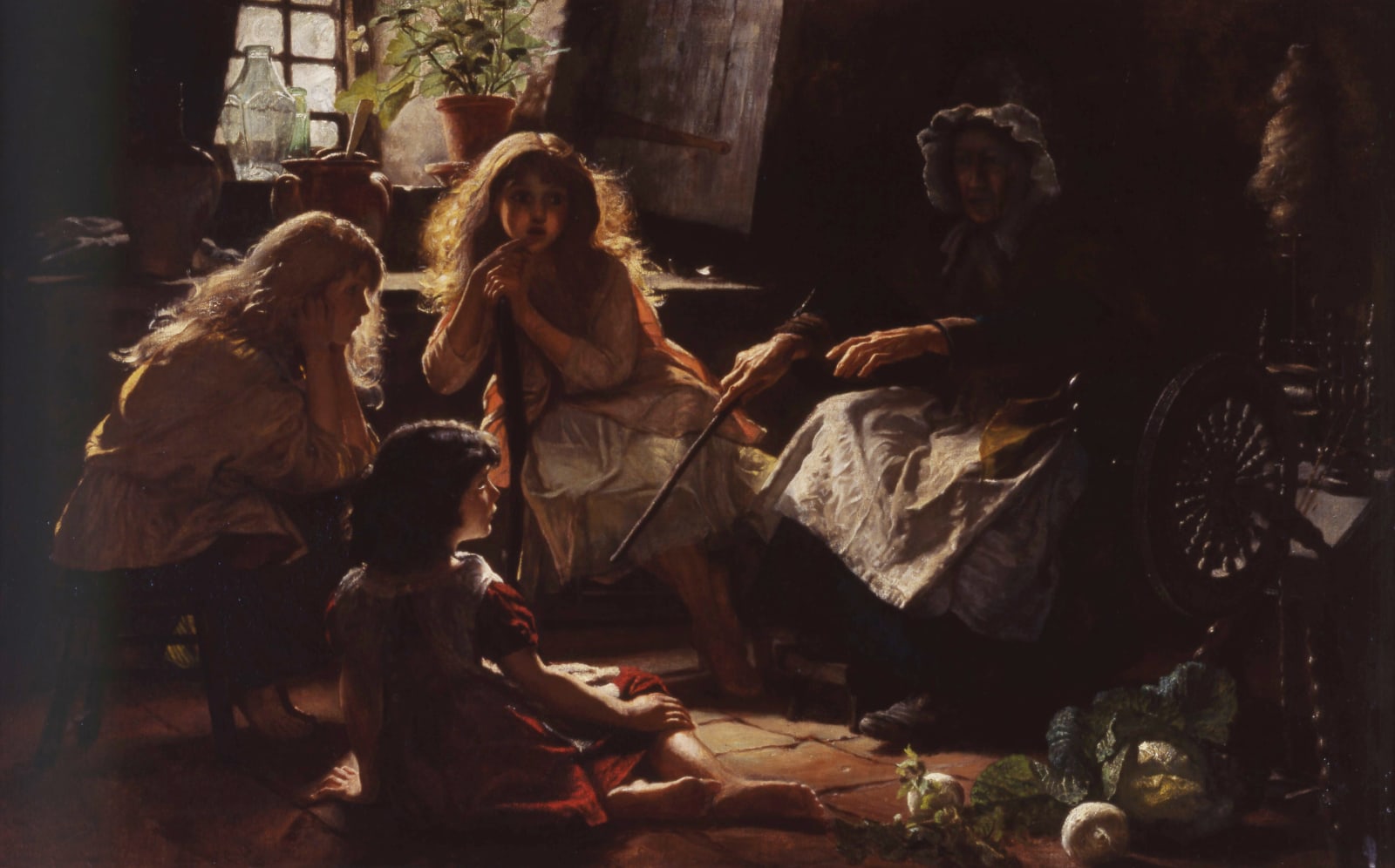Charles Gregory R.W.S.
Provenance
D. O. Young Esq., his sale Sotheby's London 8th May 1973, lot 191.
Exhibitions
London, Royal Academy, 1878, no. 1311
Charles Gregory R.W.S. (1849-1920)
"Folk Lore"
Oil on canvas, signed and dated C Gregory 1878
75 x 121 cm.
This admirable narrative was one of two oils shown by Charles Gregory at the Royal Academy in 1878, the other being "The Conversion of the Ancient Britons". Both exhibits were typical of Gregory's preferred subject matter, namely contemporary genre and historical scenes. Less common were his landscape views, painted during his travels throughout the British Isles, which included a visit to Wales (resulting in a fine view of Dolwyddelan Valley). Though Gregory worked in oils the majority of his pictures were in watercolour or pen and ink. He was an extremely able draughtsman and like many of his generation worked as an illustrator, finding employment during the 1870's with the 'Illustrated London News', (including issues for 1876, 1877 and 1879). His paintings often told a story, which as here engaged the viewer within the narrative. The present scene shows a humble cottage, the dark interior being lit by sunlight flooding in through the window, highlighting the elderly woman who has turned her attention away from her spinning wheel toward three young girls, each captivated by her stories. The old woman holds a baton in her hand somewhat reminiscent of a wand indicating that these are mysterious stories from the past - in other words folklore tales. His finely detailed and descriptive images greatly appealed to Victorian and Edwardian society and were popularised by a number of engravings, such his historical work 'Luther's Abstraction' (engraved by Carter 1889) or two scenes highlighting the plight of the poor entitled 'Weal and Woe' (engraved by Thomas Brown) or 'The Burdens' (R.A. 1881, later reproduced in the Magazine of Art 1884).
Gregory was born in Bloomsbury London and is recorded as having trained at the Royal Academy Schools. He then made his debut at the Royal Academy in 1877 with a work entitled "Pensive Thoughts", the first of twelve works shown there up until 1897. He also showed a total of eleven watercolours and oils at the Royal Society of British Artists, Suffolk Street London, 1873-77 as well as 127 works at the Royal Watercolour Society, where he was elected an associate in 1882 and full member in 1884. Gregory also maintained a long association with the Dowdeswell Galleries in London where he exhibited 92 works, while a further four of his pictures hung at the Fine Art Society London. In addition he contributed work to a number of the provincial shows including the Birmingham Royal Society of Artists (two works), Manchester City Art Gallery (seven works), the Walker Art Gallery Liverpool (21 works), the Glasgow Institute of Fine Art (four works) and the Royal Hibernian Academy (one work). Examples from his oeuvre are now housed in the Bristol City Art Gallery and the Walker Art Gallery, Liverpool.
For the first thirty-two years of his life Gregory lived in London, at various addresses, firstly in Bayswater, then Paddington, later in Fulham and finally Maida Vale. By 1882 he had moved to the Surrey countryside at Ripley north of Guildford. In 1894 he settled in Church Road Milford, south of Guildford where he was recorded at the time of 1901 census as working from his home, with his wife Annie, their son Hugh, an undergraduate at Merton College Oxford and two younger daughters Winifred and Jessie. The family then moved to Marlow-on-Thames where Gregory died on 21st October 1920 after a short illness (as announced in the 'Times', obituary).
